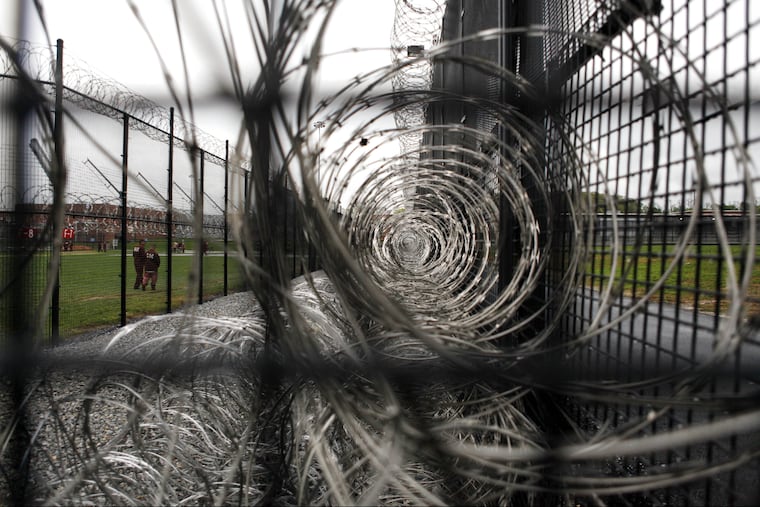Pennsylvania is poised for much-needed criminal justice reform, but can we abolish life without parole? | Opinion
In a new book on life imprisonment in the United States, the authors document that life sentences accelerated rapidly amid a harsh political environment looking to assuage public fears about victimization.

Trina Garnett was 14 years old when she killed two people in Chester. Garnett had been abused and neglected for most of her life, suffered a serious intellectual disability, and was homeless at the time of her offense. Despite these challenges, the girl was tried in adult court for the murders and sentenced to life without parole. She remains in prison today, 40 years later.
Pennsylvania has the third-largest number of people serving life-without-parole sentences in the U.S., after Florida and Louisiana. The state is leading a nationwide trend of ever-lengthening prison terms. In Pennsylvania, one in six prisoners is serving a life sentence, the vast majority of whom have no chance at a parole review. There are nearly the same number of people serving life sentences in Pennsylvania today as the entire state prison population back in 1980. This growth poses a major obstacle to ending mass incarceration, and is counterproductive to public safety.
In a new book on life imprisonment in the United States, authored by Marc Mauer and myself, we document that life sentences accelerated rapidly amid a harsh political environment looking to assuage public fears about victimization. The punitive policy approach lacked research showing effectiveness over less punitive sentences. Philadelphia is the home for most of the people serving life sentences in the state. In the late 1980s and early 1990s, it experienced a sharp, temporary rise in violence as a result of the crack epidemic. Residents’ worries about crime were not unfounded, but the solutions adopted were far from evidence-based. As the “tough on crime” movement advanced in the 1980s and beyond, much of its focus was to extend the length of prison terms through policies, such as mandatory sentencing, “three strikes and you’re out,” abolishment of parole, and trying juveniles in the adult system. Because most of the people sentenced under such provisions had committed violent crimes, there was little pushback.
Pennsylvania maintains such a high proportion of life-sentenced prisoners for two reasons: first the state abolished its parole system for all people serving life sentences. Second, people convicted of first-degree or second-degree murder receive a mandatory life sentence. Moreover, the state’s placement of teens as young as 14 in adult criminal court compounds these numbers to produce the nation’s — and the world’s — largest population of lifers who were juveniles at the time of their offense.
The diminishing impact of long sentences on public safety is largely a function of two dynamics. First, criminologists have long known that people “age out” of crime. Involvement in criminal behavior rises sharply in the late teen years among those who are at-risk, but declines significantly by the mid- to late-twenties for most. Thus, imposing a decades-long prison term on a 22-year-old means that we will be spending enormous sums of money to prevent a declining proportion of crime over time.
Second, public safety resources are finite. The $66,000 or so that is spent annually incarcerating a person in their 50s or 60s is money not available to work with the 14- and 15-year-olds who are beginning to engage in risky behaviors. It would be far more effective to invest in strengthening the capacity of families, schools, and communities to foster resilience and opportunities for young people that would avoid future incarceration.
This reorientation will involve a series of shifts in sentencing policy, including: repealing felony murder statutes that penalize a “getaway driver” as harshly as the “triggerman” in a homicide; bringing back the system of parole for lifers; and ending the “one size fits all” structure of mandatory sentencing by restoring discretion to sentencing judges in order to impose individualized sentences by person and offense.
Pennsylvania is now poised for meaningful reform as prominent elected officials have offered bold proposals to reorient the state’s sentencing policy. Reevaluation of prosecutorial practices in Philadelphia, led by the election of Larry Krasner in 2018, could place the city as a national leader in criminal justice reform. In the legislature, one proposed reform would reinstate parole for lifers. While there is no single action that will end mass incarceration, a stepped-up focus on excessive sentences is critical to making that goal a reality.
Ashley Nellis, Ph.D. is a senior research analyst at The Sentencing Project and coauthor of The Meaning of Life: The Case for Abolishing Life Sentences. She will be at Industrious (230 S. Broad St.) discussing her book at a community forum on life sentences 6 to 7:30 p.m. Tuesday.